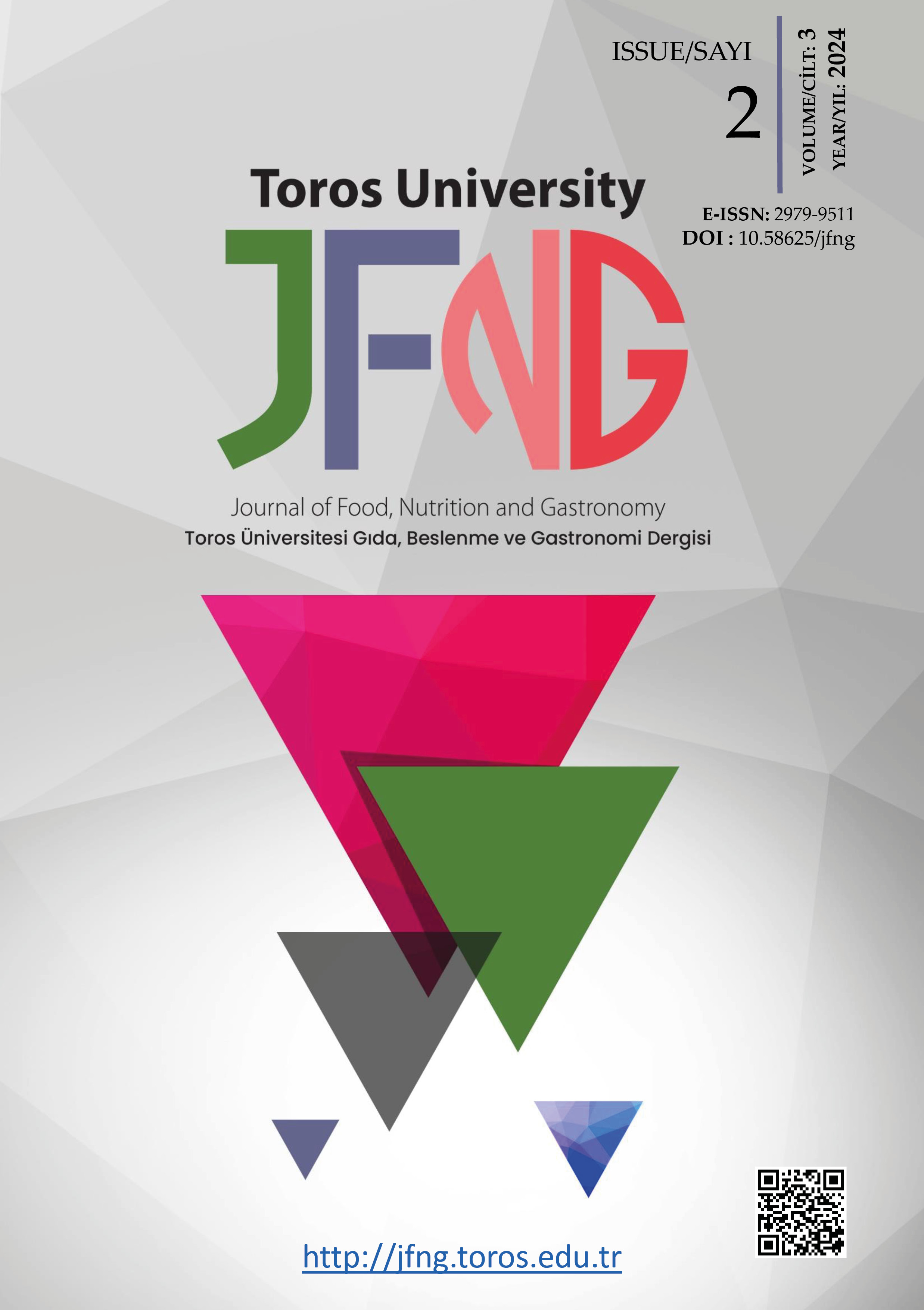Abstract
Sustainable culinary tourism offers a unique opportunity to merge nutrition, local gastronomy, and ecotourism for holistic tourism experiences. This study explores the potential of Osogbo’s traditional dishes to enhance sustainable tourism through nutritional awareness, cultural heritage, and environmental conservation. Key objectives include assessing the nutritional profiles of local cuisines, evaluating their impact on tourist satisfaction, and formulating strategies for sustainable culinary tourism. The study hypothesizes that nutritional awareness significantly influences tourist satisfaction and contributes to sustainable tourism development.
A mixed-methods approach was employed, incorporating in-depth interviews with chefs, nutritionists, and cultural custodians, alongside surveys of 322 participants. Nutritional analyses of traditional dishes complemented data on tourists’ perceptions of gastronomy’s role in their experiences. Statistical tools, including chi-square and regression analysis, were used to test hypotheses, revealing that 93.4% of respondents valued the nutritional quality of local food, with a strong positive correlation (β = 0.45, p = 0.003) between nutrition and tourist satisfaction.
Findings highlight the potential of Osogbo’s culinary offerings in driving sustainable tourism. Traditional dishes, characterized by their nutritional richness and cultural significance, not only enhance visitor experiences but also promote wellness and sustainability. Environmental conservation efforts, such as using local and seasonal ingredients, resonated strongly, with 80% of tourists willing to pay a premium for eco-friendly options.
In conclusion, integrating nutrition into Osogbo’s culinary tourism strategies can elevate the region as a model for sustainable tourism. Recommendations include developing nutritional profiling programs, promoting farm-to-table initiatives, and establishing sustainable gastronomy certifications to foster a vibrant and eco-conscious culinary tourism sector
References
Horng, J. S., & Tsai, C. T. (2012). Culinary tourism strategic development: An Asia-Pacific perspective. International Journal of Tourism Research, 14(1), 40-55. https://doi.org/10.1002/jtr.834
Smith, S., & Costello, C. (2009). Culinary tourism: Satisfaction with a culinary event utilizing importance-performance grid analysis. Journal of Vacation Marketing, 15(2), 99-110. https://doi.org/10.1177/1356766708100818
Mak, A. H. N., Lumbers, M., & Eves, A. (2012). Globalization and food consumption in tourism. Annals of Tourism Research, 39(1), 171-196. https://doi.org/10.1016/j.annals.2011.05.010
Lecerf, J. M. (2019). The Mediterranean diet: A dietary pattern for the future? La Revue du praticien, 69(10), 1134-1138. https://doi.org/10.1016/j.revhum.2019.07.002
Bessière, J. (1998). Local development and heritage: Traditional food and cuisine as tourist attractions in rural areas. SociologiaRuralis, 38(1), 21-34. https://doi.org/10.1111/1467-9523.00061
Richards, G. (2015). Evolving gastronomic experiences: From food to foodies to foodscapes. Journal of Gastronomy and Tourism, 1(1), 5-17. https://doi.org/10.3727/216929715X14298190828796
Gössling, S., Hall, C. M., & Weaver, D. (2021). Sustainable culinary systems: Local foods, innovation, and tourism. Journal of Sustainable Tourism, 19(4-5), 513-533. https://doi.org/10.1080/09669582.2011.580839
Everett, S., &Aitchison, C. (2019). The role of food tourism in sustaining regional identity: A case study of Cornwall, South West England. Journal of Sustainable Tourism, 16(2), 150-167. https://doi.org/10.2167/jost696.0
Oloyede A. O., Ajani F., Odekanmi A., Saka A.B. and Samuel T.Y. (2024) Assessing the Factors Affecting Hotel Management in Ikire, Osun State, Nigeria, European Journal of Hospitality and Tourism Research, Vol.12, No.2, pp.,57-70
Oloyede A.O., Olagunju A. C, Olaniyan B. D, Lameed A. A, Akinremi T. I., and Olarinde R.O. (2024). “Assessments of Nutritional Profile and Shelflife of Cuisines Sold in Selected Restaurants for Family Consumption in Urban-Ibadan, Nigeria”. European Journal of Nutrition & Food Safety 16 (11):274-83. https://doi.org/10.9734/ejnfs/2024/v16i111592.
Hall, C. M., &Sharples, L. (2003). The consumption of experiences or the experience of consumption? An introduction to the tourism of taste. In C. M. Hall, L. Sharples, R. Mitchell, N. Macionis, & B. Cambourne (Eds.), Food tourism around the world (pp. 1-24). Butterworth-Heinemann.
Björk, P., &Kauppinen-Räisänen, H. (2016). Exploring the multi-dimensionality of travellers' culinary-gastronomic experiences. Current Issues in Tourism, 19(12), 1260-1280. https://doi.org/10.1080/13683500.2015.1043245
Sims, R. (2009). Food, place, and authenticity: Local food and the sustainable tourism experience. Journal of Sustainable Tourism, 17(3), 321-336. https://doi.org/10.1080/09669580802359293
Telfer, D. J., & Wall, G. (1996). Linkages between tourism and food production. Annals of Tourism Research, 23(3), 635-653. https://doi.org/10.1016/0160-7383(95)00087-9
.15. Elkington, J. (1997). Cannibals with forks: The triple bottom line of 21st-century business. Capstone.
Kim, S., Eves, A., &Scarles, C. (2009). Building a model of local food consumption on trips and holidays: A grounded theory approach. International Journal of Hospitality Management, 28(3), 423-431. https://doi.org/10.1016/j.ijhm.2008.11.005
UNWTO. (2017). Second global report on gastronomy tourism. World Tourism Organization
Hall, C. M., &Gössling, S. (2016). Food tourism and regional development: Networks, products, and trajectories.Routledge.
Global Wellness Institute. (2018). Global wellness tourism economy report. Retrieved from https://globalwellnessinstitute.org/
Pine, B. J., & Gilmore, J. H. (1998). Welcome to the experience economy. Harvard Business Review, 76(4), 97-105.
Pulido-Fernández, J. I., &López-Sánchez, Y. (2016). Are tourists willing to pay more for sustainable destinations? Sustainability, 8(12), 1240. https://doi.org/10.3390/su8121240
Scarpato, R. (2022). Sustainable gastronomy as a tourist product. In A.-M. Hjalager& G. Richards (Eds.), Tourism and gastronomy (pp. 132-152). Routledge.
Chiu, Y. T. H., Lee, W. I., & Chen, T. H. (2014). Environmentally responsible behavior in ecotourism: Exploring the role of destination image and value perception. Journal of Sustainable Tourism, 22(8), 1257-1274. https://doi.org/10.1080/09669582.2013.819876
Filimonau, V., Lemmer, C., Marshall, D., &Bejjani, G. (2017). 'Nudging' as an architect of more responsible consumer choice in food service provision: The role of restaurant menu design. Journal of Cleaner Production, 144, 161-170. https://doi.org/10.1016/j.jclepro.2017.01.010
Verain, M. C., Dagevos, H., &Antonides, G. (2016). Sustainable food consumption. Food Quality and Preference, 49, 132-147. https://doi.org/10.1016/j.foodqual.2015.12.012
UNWTO. (2022). Sustainable development of tourism. Retrieved from https://www.unwto.org/sustainable-development
du Rand, G. E., & Heath, E. (2006). Towards a framework for food tourism as an element of destination marketing. Current Issues in Tourism, 9(3), 206-234. https://doi.org/10.1080/13683500608668282
Ellis, A., Park, E., Kim, S., & Yeoman, I. (2018). What is food tourism? Tourism Management, 68, 250-263. https://doi.org/10.1016/j.tourman.2018.03.025

This work is licensed under a Creative Commons Attribution 4.0 International License.
Copyright (c) 2024 Toros University Journal of Food, Nutrition and Gastronomy






